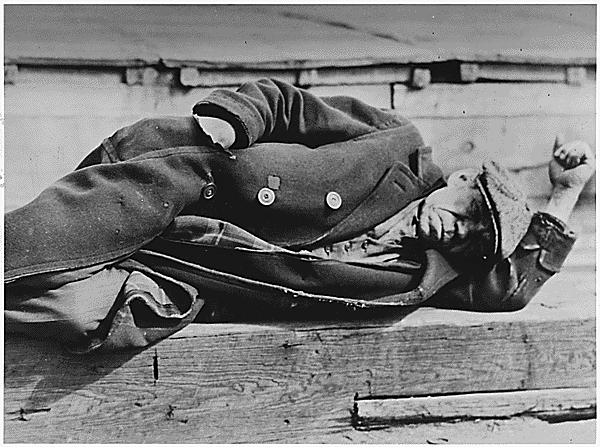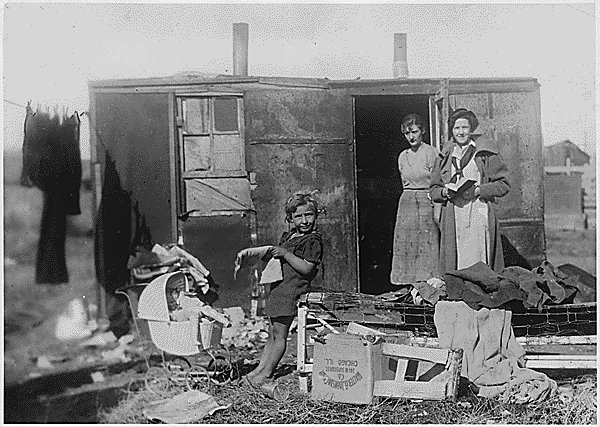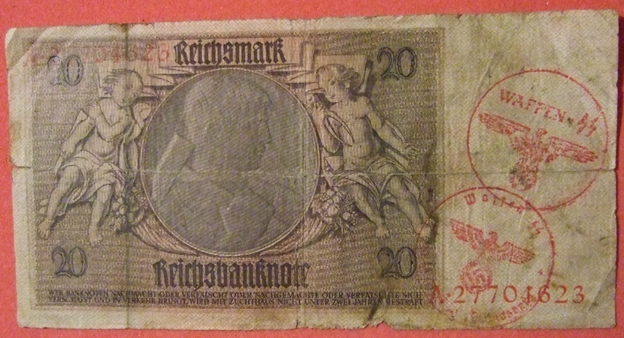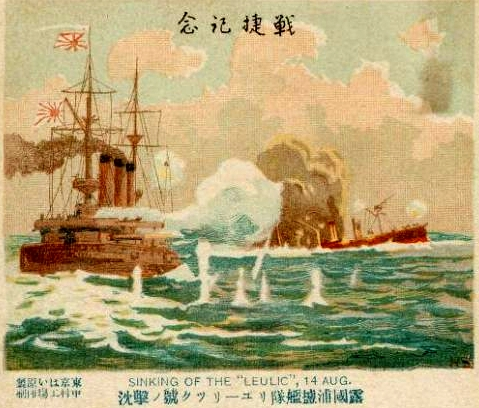Worldwide Depression

Heavy American investments in Europe helped boost European prosperity after the end of World War I. Along with this prosperity came renewed efforts at European diplomacy. The foreign ministers of Germany and France concluded the Treaty of Locarno in 1925, which guaranteed Germany’s new western borders with France and Belgium. Many viewed the Locarno Pact as the beginning of a new era of European peace. The Kellogg-Briand Pact, which sixty-three nations agreed to, pledged to renounce war as an instrument of national policy. Another hopeful sign was the new coexistence of the West with Soviet Russia. This period of relative calm lasted from 1924-1929. Things changed in 1929, with the beginning of the Great Depression, which was triggered by the collapse of the stock market and banking industry in the United States. The 1930s were not a time of hope for most of the world – although the Soviets saw it as the beginning of the end for capitalism.
U.S. Depression

The Great Depression was caused by a downturn in domestic economies and an international financial crisis caused by the collapse of the American stock market in 1929. People saw prices drop because there was an oversupply of goods, particularly wheat and coal. This caused countries to put tariffs on products like wheat in order to decrease the supply. The collapse of the stock market caused American investors to panic and withdraw funds that were invested in Germany and other European markets. That meant there was no financial backing in most European markets, and as a result, Credit-Anstalt, Vienna’s most prestigious bank, collapsed on May 31, 1931. European states decided to increase government activities after deflationary policies that lowered wages and hiked tariffs failed to work.
Macrohistory: The US to the Crash of 1929 (10 pages)
Agricultural prices provide an opportunity for us to look at the method of dealing with economic downturns as suggested by traditional liberal economic models – cut government deficits, and raise tariffs. This model does two things for an economy: it protects domestic products from foreign competition, and it can also raise government revenues. The problem is that reductions in government spending can actually reduce economic activity, and if many nations simultaneously raise tariffs, then production falls and jobs are lost as demand for exports drops. The liberal approach worked in England.
The New Deal, promoted by FDR was based on the ideas of Milton Keynes, who argued that government spending, even at a deficit, was the fastest way for economies to recover. Although the American recovery was interrupted by a recession in 1937 when Roosevelt tried to move back to a balanced Federal budget too soon, even before the American entry into World War II resulted in full employment and immense manufacturing demands, the U.S. economy was strengthening. The influence of the war on the American economy actually masks the full results of Roosevelt’s policies.
The United States’ initial response to the Great Depression was to do nothing. The United States adhered to an even more extreme form of the laissez-faire liberal economic policy than any European nation. Prominent American economists believed that depressions were a normalizing factor in the economy – that they were necessary corrections, and that depressions would increase the morality and discipline of workers. Hoover’s Secretary of the Treasury (Mellon) believed that the depression would cure the high cost of living and extravagant lifestyles enjoyed by Americans.
When FDR became President, he initially pursued social programs and some jobs programs to lift the United States out of the Depression. The New Deal was only partially successful for this. Economist Bradford DeLong writes that part of this was the American adherence to the Gold Standard for monetary policy – countries that abandoned the Gold Standard early on (Sweden) experienced relatively light economic recession, while those that stuck with it (France, United States) were heavily impacted. The reason for this was that sticking to the Gold Standard kept money tight and interest rates high, which reduced investment and the availability of jobs. The irony in this is that both the United States and France both had massive Gold Reserves, but did not use them to finance a recovery – despite FDR’s New Deal programs. DeLong also contends that some economists believe that New Deal social programs may have perpetuated unemployment to a certain extent, as people had less incentive to work. However, this is a complex issue – on the one hand, unemployment insurance was too high to encourage workers who were able to return to work quickly. On the other hand, unemployment insurance did not provide enough income for those unable to work – the long-term unemployed. There was no good way to separate these groups into different programs, and this remains the case.
European Depression

The cost of reparations and war debt also had a negative impact on post-war economies. Domestic economies were lagging and the complete obliteration of the stock market in the United States created the Great Depression. The prosperity that Europeans had enjoyed was primarily due to bank loans provided by the United States to Germany. When the market crashed, panic ensued, driving American investors to withdraw even more money out of Germany.
European countries adopted widely varied responses to the Depression. Great Britain responded using traditional remedies of balancing budgets and implementing protective tariffs. France formed a Popular Front Government, which established the French New Deal: a forty-hour workweek, two-week paid vacations, and a minimum wage. The traditional laissez-faire approach to the economy proved to be unsuccessful for the U.S. and European countries. After the failure of Herbert Hoover’s hands-off approach resulted in his ouster from office in 1932, incoming President Franklin Delano Roosevelt’s New Deal policies helped to stimulate the American economy.
Of the Fascist countries, only Germany escaped the Depression with minimal effects. German economic success was due to one thing: massive rearmament programs under the Nazis. However, fascism and Marxism became popular in the United States and other countries because the Depression weakened their faith in capitalism and democracy.
Japanese Depression

During the latter years of the 19th century, the Japanese government used its power to develop new industries, including railroads, banks, ports, and education that were modeled on American and European institutions but modified to suit Japan’s needs. By the turn of the century, the giant trade conglomerates known as zaibatsu began to develop. This was possible because, by the time the 20th century dawned, Japan had stable government and currency, and effective military, low taxes on industry – all of the elements it needed to sustain rapid growth. From 1905-1929, Japan developed not only light industries like textiles, but also developed significant domestic heavy industries such as steel production, shipping, and chemical manufacturing. Using loans to redevelop Tokyo, Japan was becoming a modern, Western-style society in many respects – urbanites engaged in leisure activities including the cinema and beer drinking. By instituting an effective education system, Japan achieved near-universal literacy.
Japan entered economic recession and Depression even earlier than much of the rest of the world, beginning with a bank crisis in 1927. However, Japan also recovered from the Great Depression quickly. By 1933 most of Japan had weathered the economic crisis, and Japanese industry accelerated its development and production, doubling its output of iron, chemicals, and steel. By 1937, Japan was self-sufficient in machine tools and had built an enormous commercial shipping capacity. During the 1930s Japan not only improved its productivity, but it also matched Western manufacturers in the quality of its products.
References
DeLong, J. Bradford. Slouching Toward Utopia?: The Economic History of the Twentieth Century. Accessed August 6, 2018. http://www.j-bradford-delong.net/TCEH/Slouch_Crash14.html.
